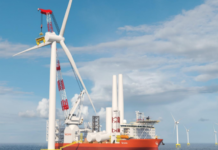Tom and I recently received complimentary copies of a new book called “Investment Opportunities for a Low Carbon World“, edited FTSE Group‘s Director of Responsible Investment Will Oulton*.
The book is a compendium of articles by 31 different authors broken down into three main categories: (1) environmental and low-carbon technologies; (2) investment approaches, products and markets; and (3) regulation, incentives, investor and company case studies.
While Tom will provide a comprehensive review of the book once he’s finished reading it in its entirety, I will instead review a few selected chapters over the course of the next couple of weeks.
I decided on this approach as that is how I generally use such a resource; I select the chapters and authors that I am interested in and I read only what I selected. That said, the majority of chapters in this book were of interest to me and I ended up selecting 19 out of 27 that I’m going to read (I won’t be reviewing them all!) Truth be told, reviewing the contents section made me feel like a kid in a candy store and I suspect that most alt energy investing aficionados would feel the same. If I like what I read, I will most likely finish the book.
This first post provides reviews of Chapters 1 and 2 on the wind and solar sectors.
Wind Power
By Mark Thompson, Tiptree Investments ltd
I tend to consider myself pretty well-versed in all things wind power, and so I was especially eager to read this chapter. Overall, I was very pleasantly surprised.
The author provides a good review of the wind turbine and wind turbine component industries. I especially enjoyed the technical discussion on turbine size and optimizing turbine output, which will become a critical competitive element for turbine makers.
For instance, we learn that because of the relationship between diameter and surface area for a circle, the power of one machine can be increased to match that of several smaller machines by simply lengthening the blades, thus lowering requirements for a range of other components and materials (for instance, two turbines with rotor diameters of 40 meters will have a power output of about 1000 kW, whereas one turbine with a rotor diameter of 80 meters can power 2500 kW.) Because of the mathematics of this, power output increases acheived through longer blades should further improve the economics of wind, so this is definitely a trend worth keeping an eye on.
We also learn that while the turbine market has been chronically under supplied for the past few years, conferring the incumbents an appreciable amount of market power – the author estimates that the top six makers hold a combined 84% market share -, barriers to entry remain high and very difficult to surmount for would-be suppliers. Concerns over quality, durability, track-record and the strength of the balance sheet to support warranties are all factors that make it very difficult to secure funding for projects using a newcomer’s technology. It is fair to say that Thompson is bearish on new market entrants.
Finally, we learn that the trend toward turbine makers internalizing sub-component design and manufacturing is restricting investment opportunities in pure-play supply chain opportunities.
However, what I enjoyed the most about this chapter was the detailed overview of how wind projects are built and what factors make them successful. When it comes to wind power, investment commentators tend to focus on turbines and turbine components, even though very interesting opportunities exist in the project development and operation space. In the author’s words: “the development process offers some of the best returns in the sector […].”
One key point made by the author in that regard is that headline figures about the size of various developers’ portfolios are rarely – if ever – comparable given the various developments stages involved in bringing a project into operation. The risk-return profile for pure-play wind power developers is far more driven by the quality of the projects than by the size of the portfolio. However, disclosure tends to be weak in that regard, making it difficult for small investors to gauge the real value of a portfolio.
Overall, I thoroughly enjoyed this chapter. In my view, the information would be most useful to a fundamentally-driven investor looking to really understand how wind power and the wind power industry really work. While the chapter does not answer every question an investor might have, it nonetheless provides the right balance of technical and business information to set someone on the right path. It is a reference to which I will go back.
Those looking primarily for stock picks, however, will be disappointed. The lack of stock picks is probably the chapter’s weakest point, especially given that the book is purportedly about investment opportunities. Having said that, investment ideas abound on the Internet these days and books focused too heavily on providing stock picks at the expense of more general information risk having very short shelf-lives.
Solar Power
By Matthias Fawer, Bank Sarasin
Writing a book or a book chapter on solar power, especially solar PV, is always a risky endeavor as the information could be outdated 12 months after publication. I thus salute the effort of those who undertake to do it, but in my view this sector is best left to specialist consultancies and sell-side analysts because they can easily update their analysis when conditions change, something that happens frequently in the world of solar PV.
Matthias Fawer’s chapter does, in a lot of ways, read like a sell-side report. It covers three broad sub-sectors of solar: (1) solar photovoltaic; (b) solar thermal; and (c) solar collectors. Other than for solar thermal, the way in which the chapter is written assumes the reader already has a fair bit of solar knowledge. For instance, unlike your typical generalist piece on solar PV, few if any details are provided on what the main solar PV cell technologies are, how they compare in terms of price and performance and which company makes them.
The advantage of this approach is that it allows the author to jump straight into industry-level dynamics and not waste precious space explaining what many people already know. For instance, we learn fairly early on that Bank Sarasin sees silicon cell production appreciably outpacing module production until about 2012, potential
ly providing module makers with a margin expansion opportunity. We also learn that the plant engineering firms that had done so well when every cell manufacturer and their grandmother was adding production capacity during 2007 and 2008 could underperform in the next few years.
Of course the drawback from not providing a lot of technical background is that it makes the chapter a lot less useful for the novice solar investor, or even for the investor who knows a little bit but does not follow the industry closely. The author does, however, provide a ranking of the “strategic positioning” of 27 solar PV firms based on a proprietary model, with his top pick being Q-Cells (QCLSF.PK) from Germany.
The section on solar thermal, also known as concentrating solar power (CSP), contains more basic information on the technology, and provides an overall very good introduction to the sector. Unfortunately, there is a dearth of CSP investment options, and this sector is thus effectively off-limit to most retail investors.
The section I liked the most in the chapter was the one on solar collectors for building and water heating, an industry I knew about but had never researched. I learned, much to my amazement, that by the end of 2008 there was 142 GW of solar collector capacity installed worldwide, versus 12 GW of solar PV and 1.3 GW of CSP.
China is by far the largest market for solar collectors and, unlike in other industries, it absorbs, according to the author, 90% of its own production. Fawer expects annual growth to be about 25% until 2011 and to settle at 18% between 2011 and 2020. However, the much larger installed base currently means that the absolute level of new installations could be quite massive. Although the section on solar collector does not provide stock picks, it most definitely poked my interest and convinced me to look further into this.
Overall, while I was a bit underwhelmed by the solar PV section, I found the CSP section useful and the section on solar collectors very interesting. A greater technical focus would have strengthened the chapter given how technologically complex solar is, and more stock picks would have been appreciated. However, I will definitely go back to the chapter when I do research on solar collectors and even CSP.
DISCLOSURE: None
* We are always interested in reviewing books and reports in the areas of alternative energy, cleantech or other environmental industries, especially where they add value to the investment decision-making process. If your organization would like a new book or report reviewed, please contact us.










“For instance, we learn that because the relationship between diameter and surface area is exponential for a circle”
I don’t think exponential is the word you’re looking for (it implies e^x). Perhaps quadratically?
Ted:
You are right, quadratic is what I should have used. Thanks for pointing this out.
I changed the phrasing entirely and kept it simple.
I recently returned from an extensive visit throughout China and was struck by how solar hot water heaters seemed to be atop virtually every building, most of which seem to be made by the same manufacturer. When I asked, I was told that they’re cheap and they work. Of course, there’s no backup source; in China, cloudy, cool days preclude any hot water at all. I came away with the feeling that we will see such simple solar hot water use like this spread throughout the world.